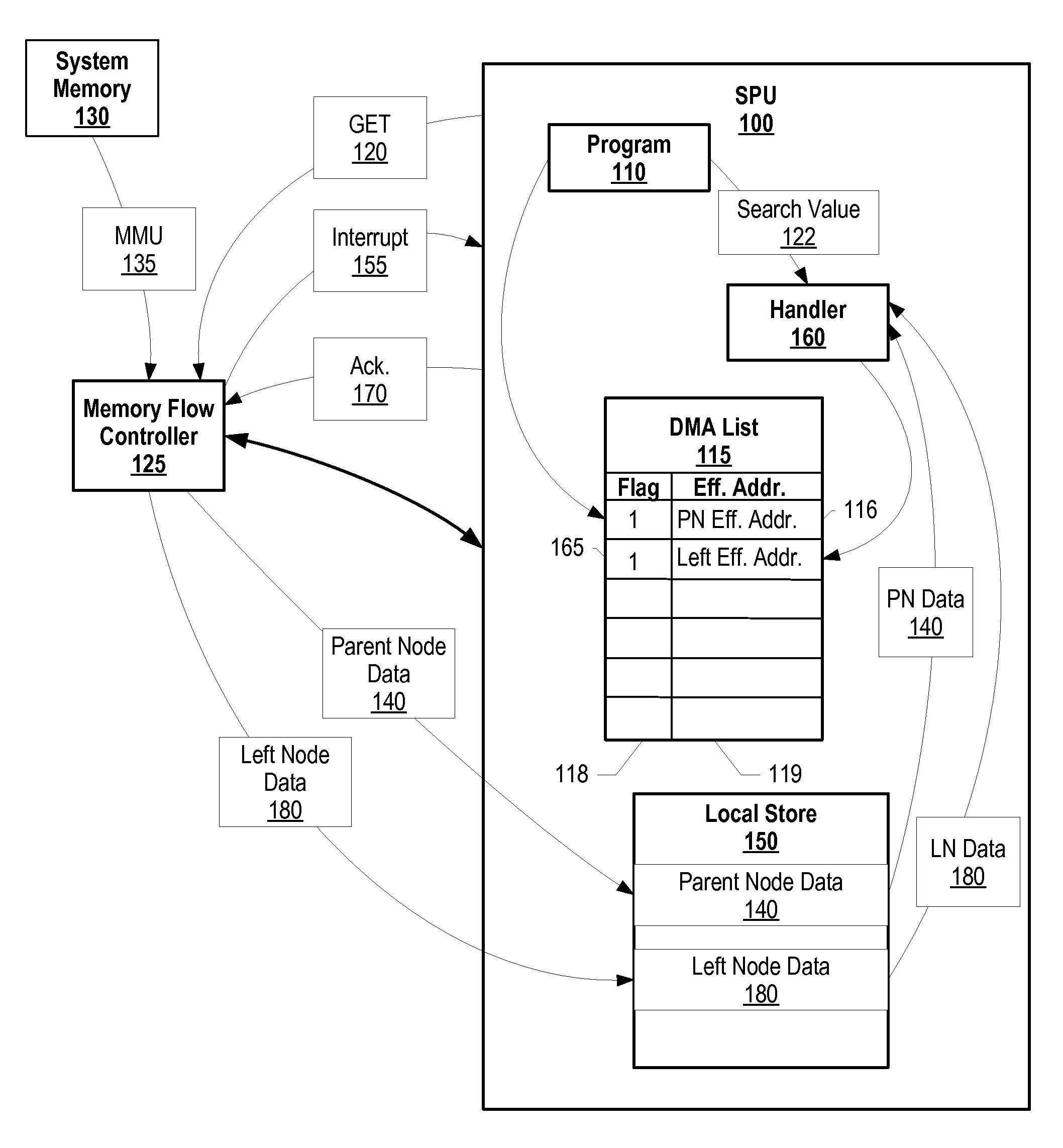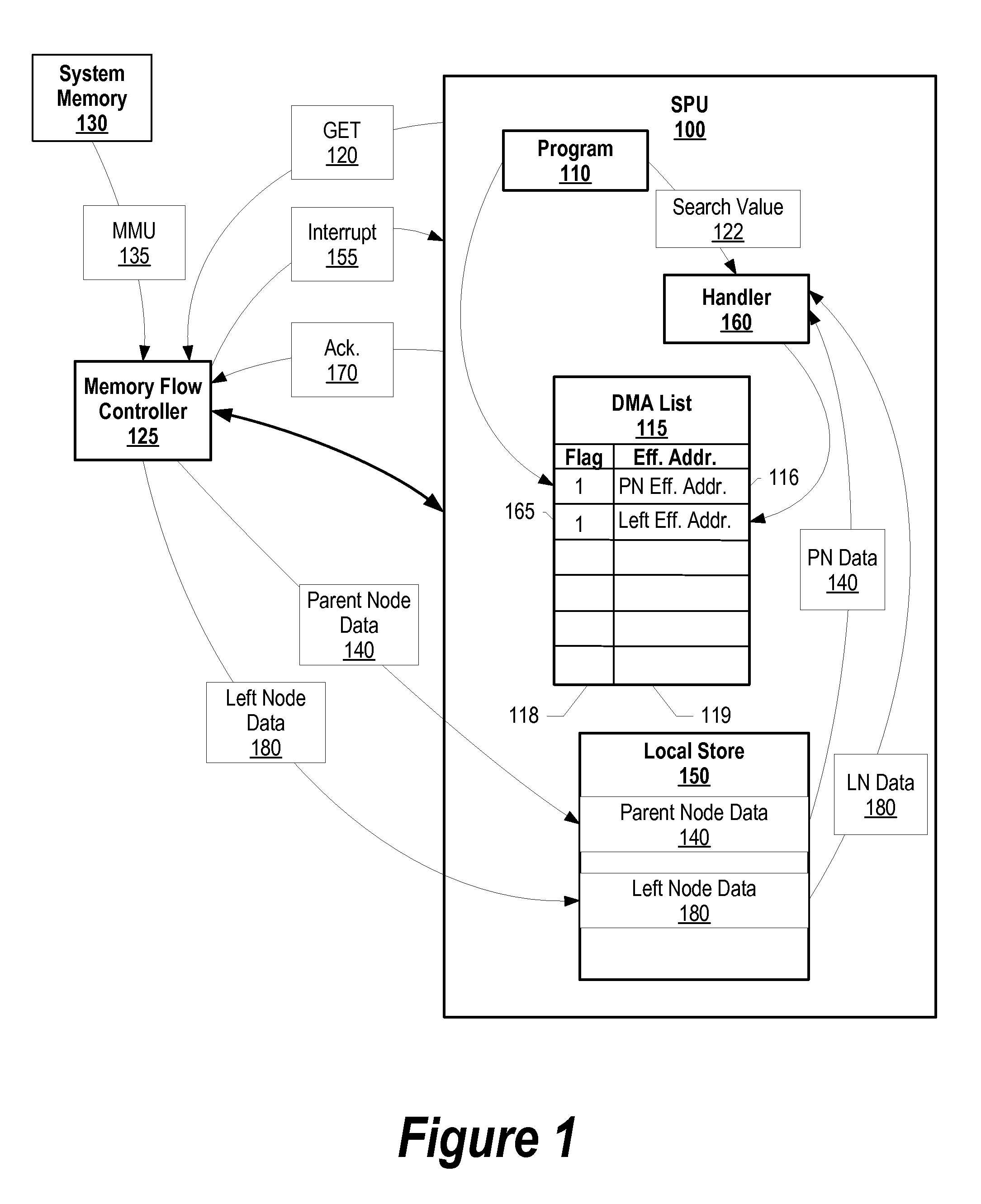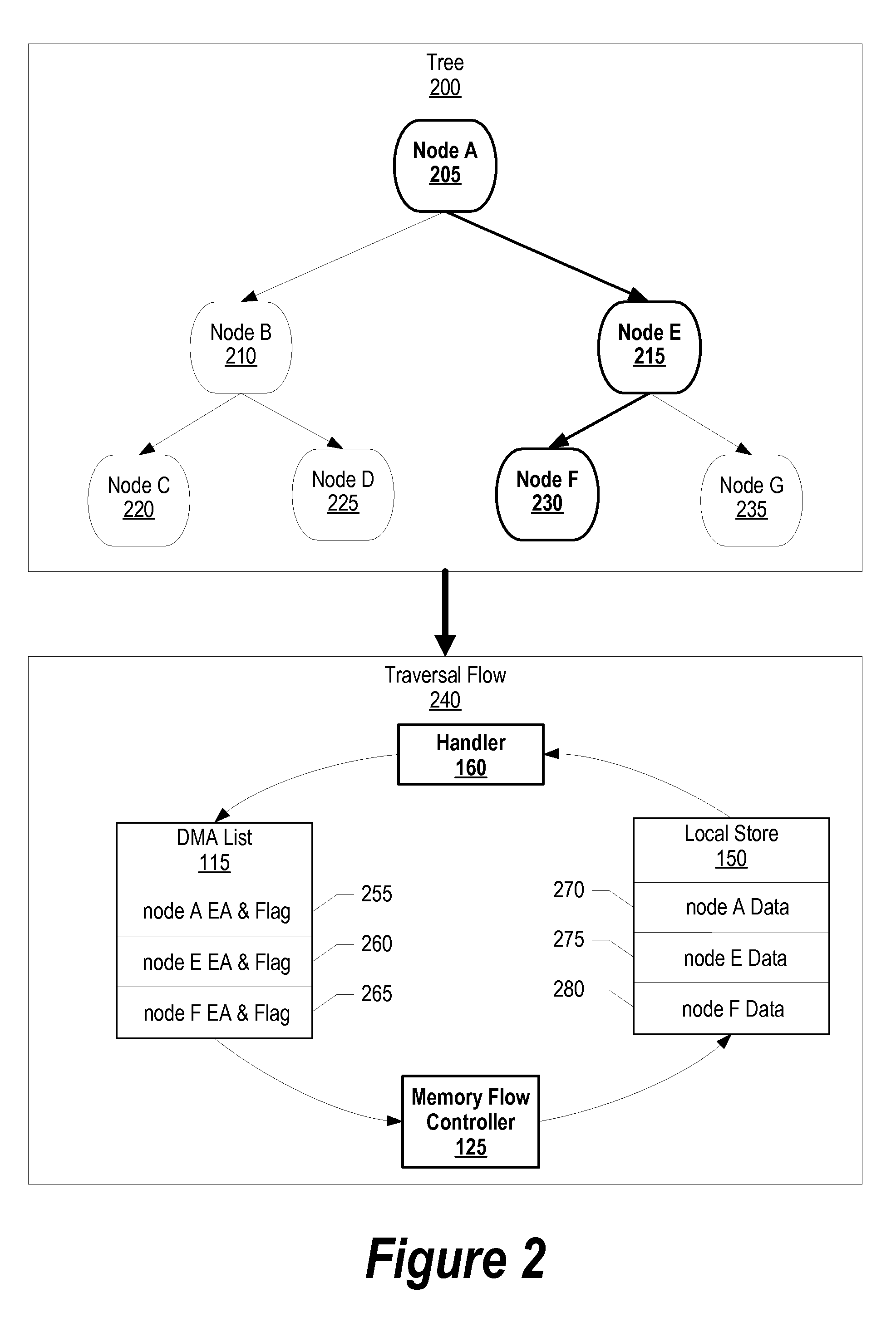Asynchronous Linked Data Structure Traversal
a data structure and linked data technology, applied in the field of asynchronous linked data structure traversal, can solve the problems of ineffective kind of latency hiding technique, data transfer latencies that bind a program's performance, and linked data structures that reside in non-contiguous memory
- Summary
- Abstract
- Description
- Claims
- Application Information
AI Technical Summary
Benefits of technology
Problems solved by technology
Method used
Image
Examples
Embodiment Construction
[0025]The following is intended to provide a detailed description of an example of the invention and should not be taken to be limiting of the invention itself. Rather, any number of variations may fall within the scope of the invention, which is defined in the claims following the description.
[0026]FIG. 1 is a diagram showing a synergistic processing unit (SPU) working in conjunction with a memory flow controller (MFC) to traverse a linked data structure. SPU 100 is preferably a single instruction, multiple data (SIMD) processor, such as a digital signal processor, a microcontroller, a microprocessor, or a combination of these cores. In a preferred embodiment, SPU 100 includes a local memory, registers, four floating point units, and four integer units. As one skilled in the art can appreciate, depending upon the processing power required, SPU 100 may include a greater or lesser number of floating points units and integer units.
[0027]SPU 100 includes program 110, handler 160, DMA l...
PUM
 Login to View More
Login to View More Abstract
Description
Claims
Application Information
 Login to View More
Login to View More - R&D
- Intellectual Property
- Life Sciences
- Materials
- Tech Scout
- Unparalleled Data Quality
- Higher Quality Content
- 60% Fewer Hallucinations
Browse by: Latest US Patents, China's latest patents, Technical Efficacy Thesaurus, Application Domain, Technology Topic, Popular Technical Reports.
© 2025 PatSnap. All rights reserved.Legal|Privacy policy|Modern Slavery Act Transparency Statement|Sitemap|About US| Contact US: help@patsnap.com



